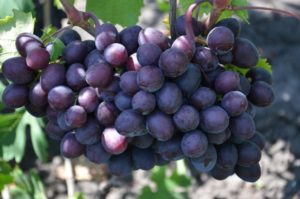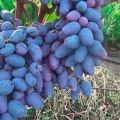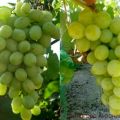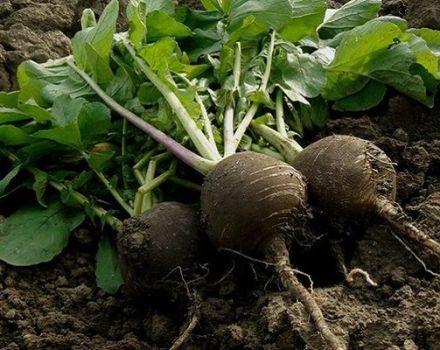Description and advantages of Crystal grapes, planting and care features
The main use of the Crystal grape variety is as a raw material for the production of fortified dry and sweet wines of the Jerez brand. But, due to the high sugar content in berries and high taste, it is very popular among amateur gardeners - for fresh consumption, making natural juices, compotes, marshmallows, jam, raisins.
Variety history
The Kristall variety was obtained by Hungarian winegrowers by two-stage crossing of the Amur grapes with the Hungarian varieties: Challozi Lajos - 1 step and Villard blanc - 2 step of selection.
From the Amur grapes, Kristall inherited endurance to adverse weather conditions and severe frosts, and from the Hungarian varieties - noble taste and resistance to diseases and pests of culture.
This variety is grown in the areas of the North Caucasus and the Lower Volga region.
Description of Crystal grapes
Crystal is a technical grape variety with a high sugar content, belongs to a self-fertile variety (with a bisexual type of flowers), does not require proximity to pollinators.
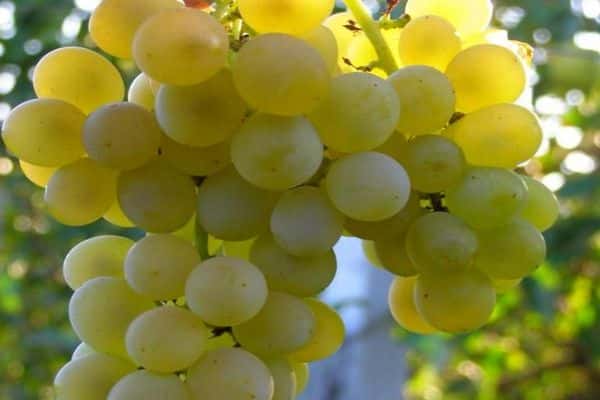
Description of the variety:
- bushes are medium-sized, with cut leaves of a dark green color;
- clusters of medium size, with medium density of berries;
- a bunch of conical cylindrical shape;
- berries of medium size (berry weight - from 2.0 to 2.5 grams), oval;
- berries are light green, yellow, in a state of ripeness a pink tint appears;
- grapes have juicy, tender pulp, small bones, dense skin, covered with a waxy coating, which serves as protection from pests.
Characteristics of plants and berries
Crystal is an early ripening variety, full ripening of berries occurs in 4 months from the moment of spring awakening of the vine. On the territory of the Saratov and Volgograd regions, the mass harvest of grapes occurs in mid-August, in the Astrakhan region and in the North Caucasus, the harvest begins in early August.
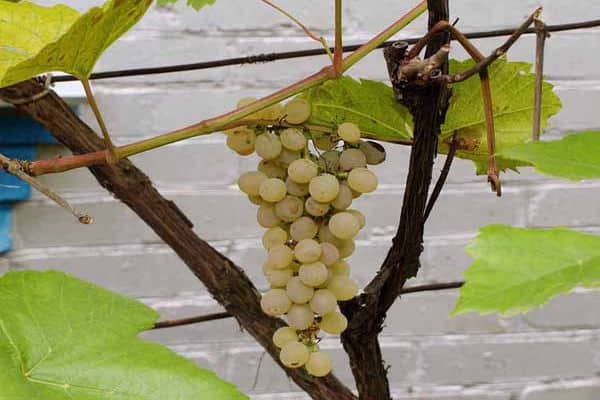
The variety gives consistently high yields - from 160, on average, to 200 centners per hectare.
The weight of one bunch is 180-200 grams. The berries retain their taste in bunches on the vine until the onset of cold weather.
The crystal can gain sugar content from 18 to 23% of the berry mass on the Brix scale, which is considered a good indicator.
The tasting score of Jerez table wines from Crystal grapes is estimated at 8.5 points, and sparkling wine - 9.1 points on a 10-point scale.
Advantages and disadvantages of the variety
Advantages of the Kristall variety: high and stable yield, early ripening of berries, resistance to fungal diseases and gray rot (at the genetic level).
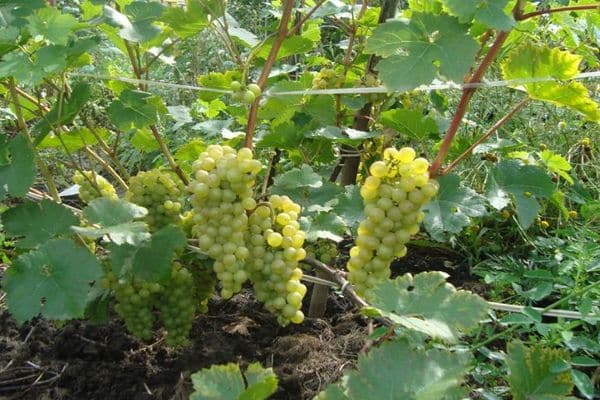
The variety tolerates frosts with shelter from -29 From to -35 C, depending on the methods and quality of the covering material.
The disadvantage is the formation of small berries (peas) in the bunch - this is due to poor quality grape care during the formation of a bunch and negative climatic conditions in the spring.
Selection of seedlings and plot
Selection of sites for grapes: lowlands, areas with close groundwater, areas blown by winds are not suitable for planting. In such areas, the grapes and its root system rot, the plant grows slowly or dies, becomes infected with fungal diseases.
Hillsides are chosen for plots, seedlings are planted from the south.
When choosing seedlings, attention is paid to the condition of the root system. Roots should be up to 10 centimeters long, healthy roots have light brown color, young roots are green, inner fibers are white.
It is better to choose seedlings rooted in the ground.
The grapes reproduce well by cuttings (3-4 buds), germinated within 2-4 weeks in water; after the formation of roots 3-4 centimeters long, the cuttings are planted in the ground.
Planting tips
Planting of seedlings or cuttings is carried out in holes with a drainage layer of pebbles, clay shards; on top of the drainage, a nutritious soil is laid out with the addition of wood ash and complex mineral fertilizer.

The seedlings are laid at an angle, covered with earth, leaving the root collar 3 centimeters above the ground. To stimulate growth and rooting, the seedling is watered with a solution Potassium humate and Heteroauxin (root growth stimulant).
It is better to plant seedlings in the spring, when the air warms up to +15 FROM.
The distance between the plants is 80 centimeters, and between the rows - 2.5 meters.
Growing and care
Growing and caring for grapes includes agrotechnical and technological cultivation procedures.
It is necessary to carry out annual pruning, pinching of shoots, to prevent thickening of the bush, which leads to a decrease in yield, disease of the bushes. Prune shoots in late autumn or early spring when the vine is dormant.
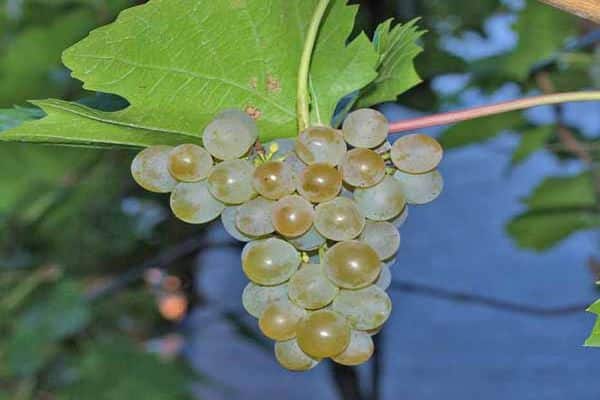
When trimming, a replacement shoot of 3-4 buds is left on the sleeve and up to 10 buds are the main shoot. A total of 60 buds can be left on an adult vine. Watering is carried out depending on weather conditions. In dry weather, watering is carried out every ten days, in a rainy summer, watering as needed.
Top dressing is carried out with mineral fertilizers. Potassium humate is a universal stimulator of the growth and development of grapes.
Weeding under bushes, mulching the soil with needles will protect plants from pests.
About diseases and pests
The main diseases of grapes are mildew, oidium, gray rot; from pests, grapes suffer from ticks and wasps. The crystal has a protective gene against rot and good resistance to the penetration of fungal spores.
Preventive treatment (2 times a year) with combined fungicides provides protection against diseases and pests.
To protect against wasps, traps are made, the bunches are wrapped in mesh fabric.
